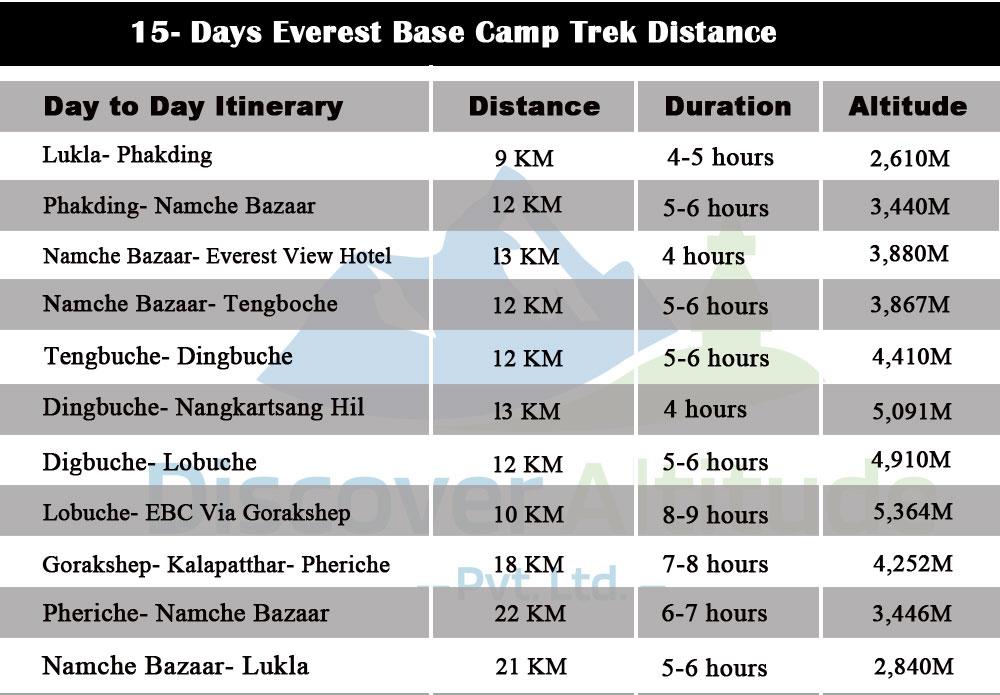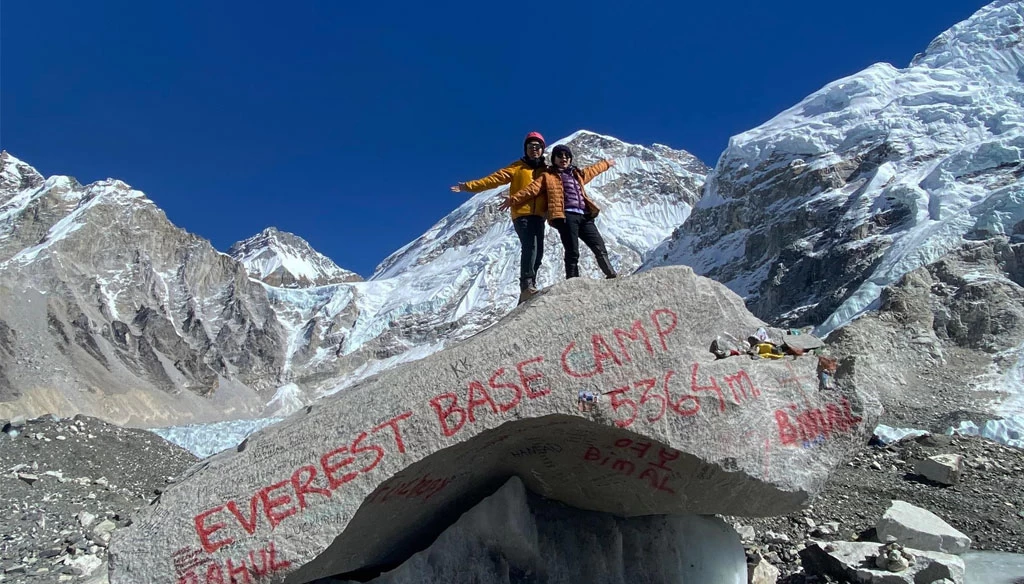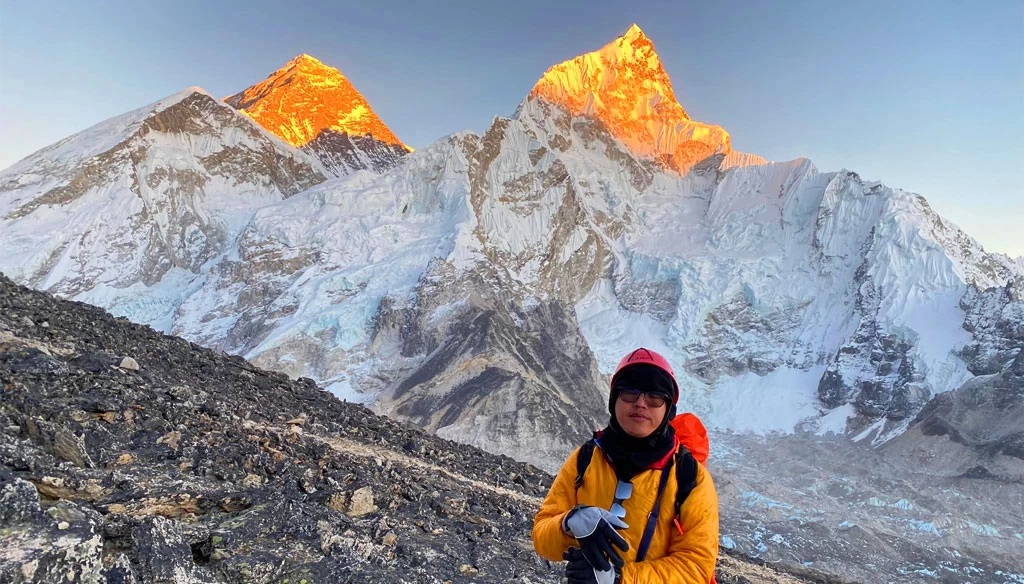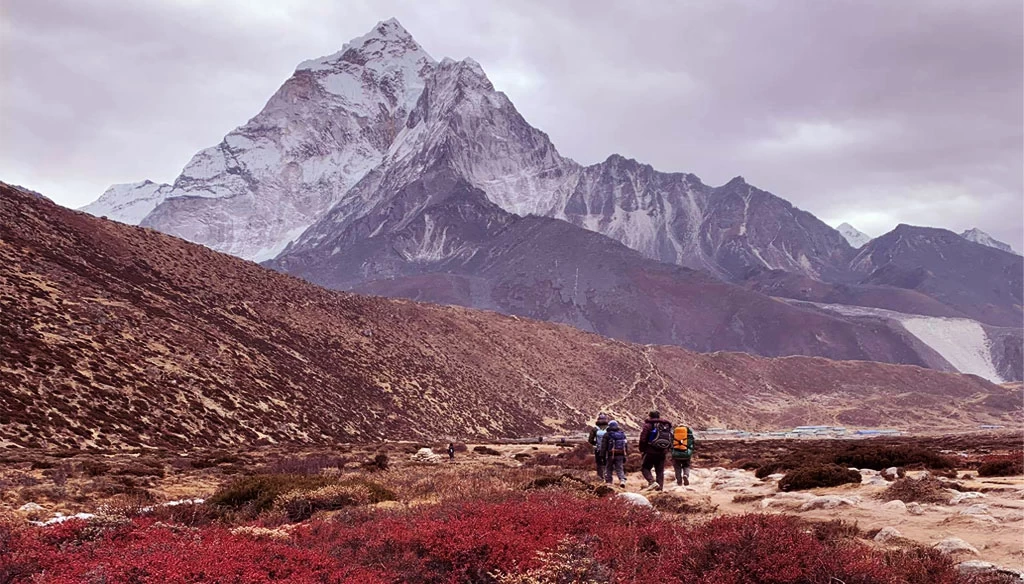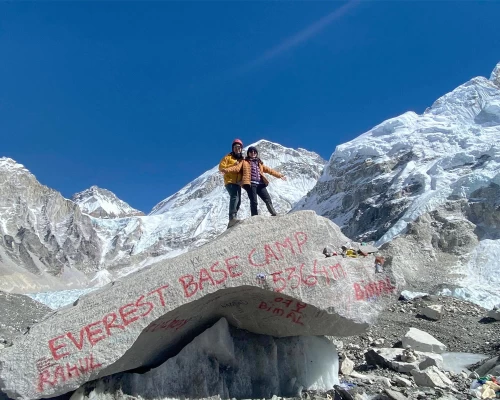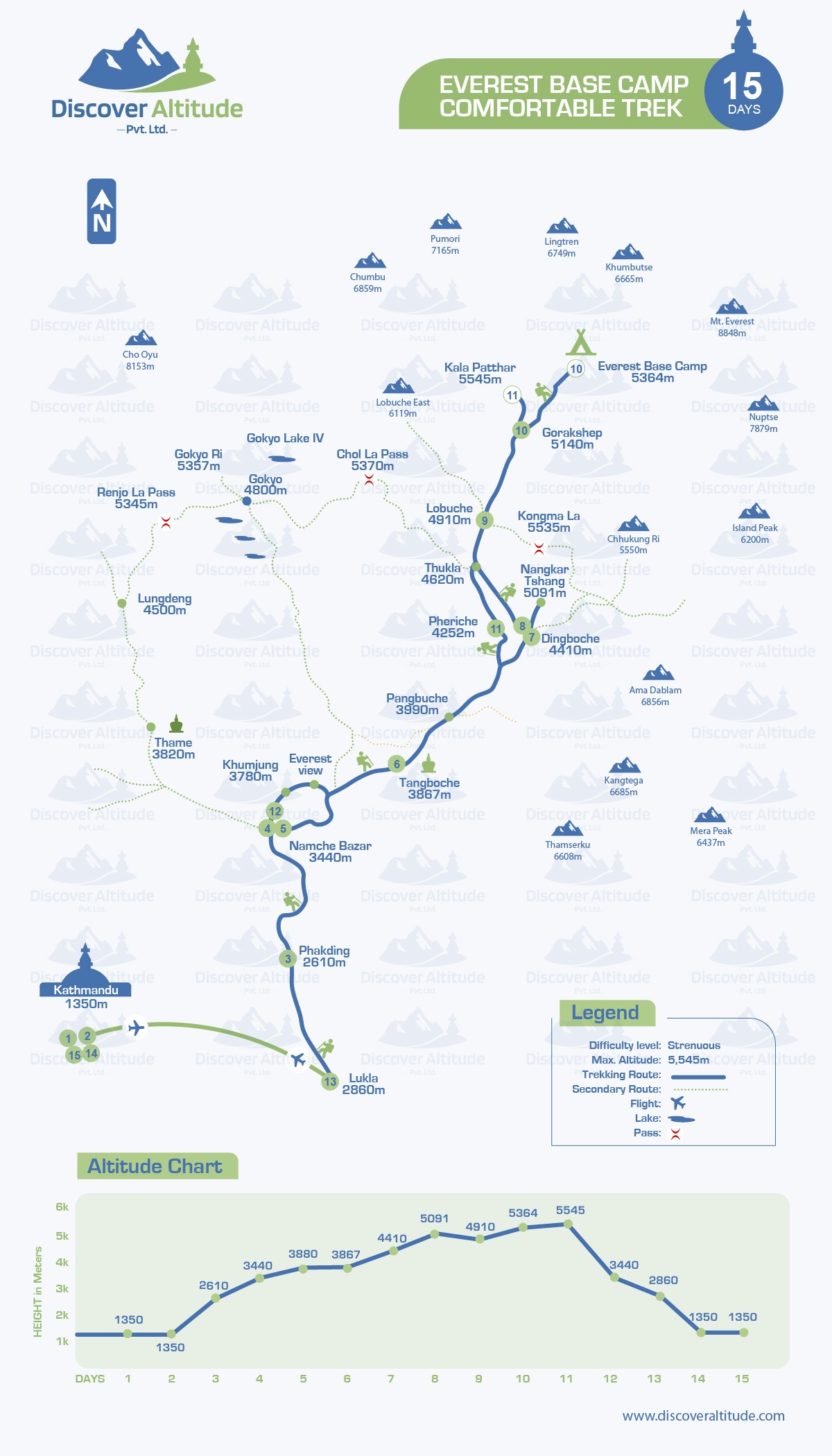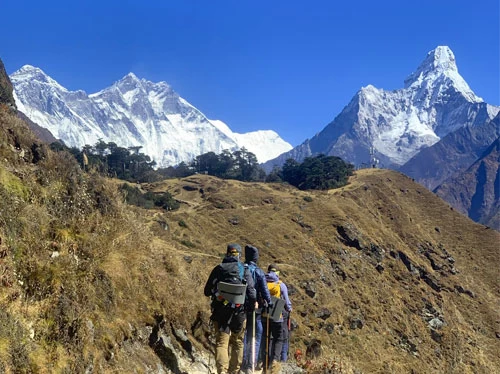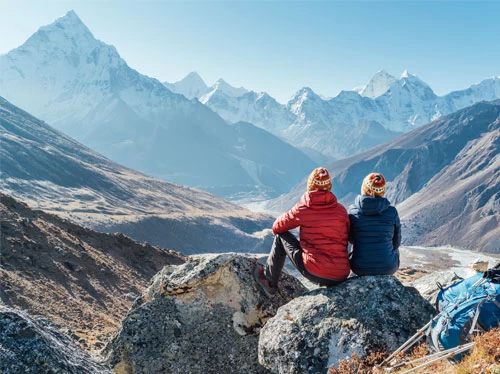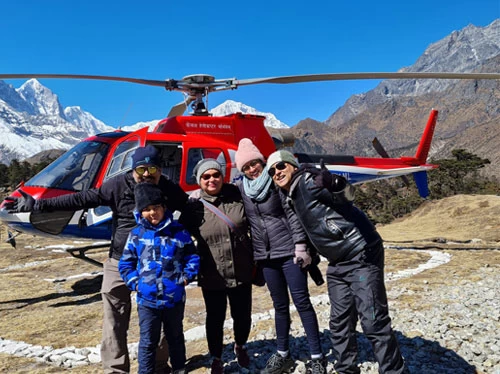Everest Base Camp Trek, famously known as the EBC Trek, is one of the most incredible trekking journeys to the base of the world's highest mountain at 5,364 meters (17,598 feet).
This is a 15-day trip leading to the base of Mt. Everest, also known as ‘Sagarmatha’ in Nepali and ‘Chomolungma’ in Tibetan. It is well-known among trekkers as the best place to be.
Trekking to Everest is not a mere hike, it is a journey to the highest base camp on earth with the majestic view of the Himalayan vista and diverse Himalayan vegetation, and Sherpa culture.
Travel to Everest Base Camp will lead you to a diversity of nature and culture and is a once-in-a-lifetime experience with the enchanting view of Thamserku 6,623 meters (21,729 feet), Ama Dablam 6,812 meters (22,349 feet), Lhotse 7,600 meters (24,934 feet), and of course Mt. Everest 8848.86 meters (29,032 feet).
Apart from all this, the culture and lifestyle of the Sherpa people are of great interest. Sherpas are the only human inhabitants communities of the Himalayas. Their culture and welcoming hospitality will be one of the musts for experiencing things while in the Himalayas.
The entire high Himalayan region, which includes the Everest Region, is one of the oldest settlements of the Sherpa people, who are also known as the people of the Himalayas.
Their age-old unique lifestyle, culture, religion, and always welcoming attitude and gesture will make you visit this region again and again.
Moreover, the Sagarmatha National Park, a UNESCO-listed site is a protected zone of this region and is an asset for the people by protecting flora and fauna.
Everest region carries an important abode for different wild animals and birds which are found in high altitudes, making them rare living creatures.
The magnificent view from Kala Patthar 5,545 meters (18,192 feet) is the best place to observe the Himalayan range which will make you feel like you are in paradise and the sunrise view of the Himalayas is a breathtaking experience.
Thanks to Tenzing Norgay Sherpa and Sir Edmund Hillary for their journey to the summit in 1953 AD, which made this region known to people around the world. Now, for many, it’s once in a lifetime experience and they wish to visit this region.
Everest region is one of the spiritual lands on earth mainly influenced by Buddhism, hanging praying flags, praying wheels and the beating of monastic drums and pipes by the lama further purifies the region, which can be seen and heard from a far distance.
This 15-day Everest trek starts with a sightseeing tour in the Kathmandu valley. This tour is an ample opportunity for trekkers to learn about the history and culture of Nepal.
You will be informed about the importance of religion in the Himalayas; this will be an asset to know about the unique religion of the Sherpa people and the way they have been living in the Everest Region/ Khumbu region for centuries.
Discover Altitude has a specially designed Everest Base Camp 15-day trek Itinerary with frequent field visits by our professional staff to make sure the program goes according to the itinerary mentioned below.
For the convenience of our client, a detailed itinerary of the Everest Base Camp Trek, cost, highlights, pictures, and the map have been provided.
As it is an energetic trek into the Himalayas, trekkers can visit this trail throughout the year. The cost for Everest Trekking varies on the number of days and person.
The itinerary of the trek starts after landing at Lukla airport. Trekkers will have multiple choices when it comes to Discover Altitude, we can further customize your trip according to your time frame and interest.
Outline Itinerary: 15 Days Everest Base Camp Trek
Day 1: Arrival in Kathmandu, Nepal - 1,350 meters (4,430 feet)
Day 2: Drive to Manthali and fly to Lukla 2,860 meters (9,383 feet) then hike to Phakding village - 2,610 meters (8,563 feet)
Day 3: Trek from Phakding to Namche Bazaar - 3,440 meters (11,286 feet)
Day 4: Acclimatization day at Namche -day tour to Everest View Hotel - 3,880 meters (12,730 feet)
Day 5: Trekking to Tengboche or Deboche - 3,867 meters (12,687 feet)
Day 6: Trek from Tengboche to Dingboche - 4,410 meters (14,469 feet)
Day 7: 2nd Acclimatization Day in Dingboche - Hike to Nangkartsang Hill - 5,091 meters (16,703 feet)
Day 8: Trekking to Lobuche via Thukla - 4,910 meters (16,109 feet)
Day 9: Trek to Gorakshep and continue the hike to Everest Base Camp 5,364 meters (17,598 feet) and return to Gorakshep for an overnight stay- 5,140 meters (16,864 feet)
Day 10: Hiking to Kala-Patthar 5,545 meters (18,192 feet) and Descending to Pheriche - 4,252 meters (13,950 feet)
Day 11: Return to Namche Bazaar - 3,440 meters (11,286 feet)
Day 12: Descend to Lukla Village- 2,840 meters (9,318 feet)
Day 13: Fly to Manthali airport and drive to Kathmandu
Day 14: Free day in Kathmandu
Day 15: Departure from Kathmandu, Nepal
Everest Base Camp Cost for 2025, 2026, and 2027
Everest Base Camp Trek ( EBC Trek) Costs 1549 USD per person for group joining and 1749 USD Per person for private trek.
Everest Base Camp is one of the most popular trekking and touring destinations in Nepal and also the most preferred trekking destination around the globe. This is so because of the diversity of ecology, culture, and vegetation at such high altitudes.
Everest Base Camp Trek cost varies between local base inbound and outbound companies. When you choose a locally based company for the Everest Base Camp Trek, the price is much cheaper. Further within the locally based company, there is variation in cost for the Everest Base Camp Trek.
This is so because of the services they allocate to travelers and also the number of days for the entire trek. Discover Altitude has multiple options for the Everest Base Camp Trek with different services and the number of days as well.
We normally arrange multiple options according to your physical fitness level, age group, and your restricted time frame in Nepal.
We are here to help any trekkers according to their budget limit by customizing the trek packages in their time frame, which may be through increasing or decreasing the number of days, or by arranging the services accordingly.
Please feel comfortable talking with our expert, as we know how important it is to stop at the base of the highest mountain in the world, Mt. Everest, means to you.
| Number of persons in a group | Costs |
| 1 Person ( One or more for private trip) | $ 1749 Per Person |
| 2 - 15 Person ( Group Joining) | $1549 Per Person |
Add one's cost during the Everest Base Camp Trek
- Luxury Lodges during EBC Trek cost: USD 250 ( Double Bed: 2 person) on a BB basis per night
- Gorakhshep to Lukla Helicopter Flight: USD1800 ( maximum 2 persons ) Private way
- Gorakshep to Kathmandu Helicopter Flight: USD 1350 Per Person
Note: We believe in quality service, and our Everest Base Camp ( EBC) Trek cost reflects the value of a safe, well-organized, and lifetime memorable experience.
Customize Your Trip | Instant Booking
Trek Preparation for Nepal Everest Base Camp
Everest Base Camp starts with a moderate to strenuous hike with frequent rest to acclimatize our body to the high altitude. The trek starts with the lowest altitude at LUKLA (2,840 meters) and takes us to the highest altitude of KALAPATTHAR (5,545 meters) and EVEREST BASE CAMP (5,364 meters).
Blessed with varied flora and fauna, the Everest region is regarded as the abode of the Sherpa community and is the dream of every trekker to reach the Base of Everest.
However, trekking to Everest Base Camp requires a high level of physical fitness and, preparation before the trek is highly recommended. Here are some of the must-do lists for travelers before the trek.
Physical Fitness: Everest Base Camp Trek is considered a strenuous trek and requires a high level of physical fitness. Your trek will be through steep and rocky terrain in some parts and you will need to hike several hours every day with a light backpack.
For this, you have to prepare yourself with regular cardio exercise, which can be through swimming, cycling, or running, which will help your leg muscles.
Apart from this, train yourself with a hike, carrying a backpack before the trek.
Acclimatize with the altitude: Everest Base Camp Trek is a high-altitude trek leading you to the base of Mount Everest (5,364 meters). The highest point-to-step will be Everest Base Camp (5,364 meters) and /or Kalapatthar (5,545 meters).
Moreover, your highest point for an overnight stay will be Gorakshep (5,140 meters). This makes Everest Base Camp a high-altitude trek and hence altitude sickness might be a serious problem for first-time trekkers. Thus, to avoid this, proper acclimatization during the trek makes the entire trek an easy hike.
Travel Insurance: It is highly recommended to have travel insurance covering high-altitude evacuation in time of an emergency. Please read the policy of your insurance.
Trekking Documents: For the Everest Base Camp Trek, you will need three different permits, namely the Sagarmatha National Park Permit, Pasang Lhamnu Permit, and TIMS Card.
Trekking Gears and Equipment: You will need proper trekking clothes and trekking gear for your Everest Base Camp Trek. This mainly depends upon the month of the year you are trekking.
However, a good pair of hiking boots, a warm jacket, a sleeping bag, a trekking pole, sunscreen, lip balm, sunglasses, etc., are basic to have.
Mentally be prepared: Everest Base Camp Trek is challenging both physically and mentally. This trek requires effort and a certain level of flexibility and patience for long days of trek, changes in weather conditions, accommodation, etc.
If trekkers follow all this guidance, their trek will be a flexible way to reach the base of the highest mountain.
We always recommend our clients consult a doctor before their high-altitude trek. This will help you to know about your physical condition and the possibility of trekking to Everest Base Camp. It is always good to carry your recommended basic medicine and first aid kit for any region where the possibility of hospitals and doctors is lacking.
Everest Trek Distance- Lukla to Lukla
